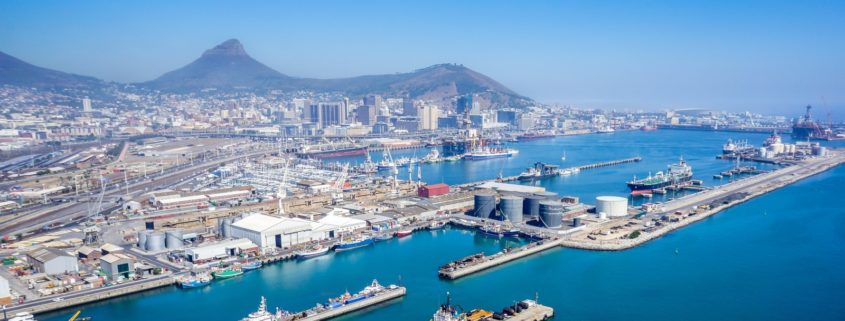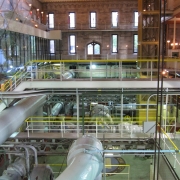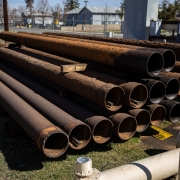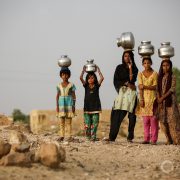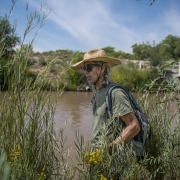Cape Town’s “Day Zero” Approaches
Local authorities estimate that taps will be turned off by April 29, 2018.
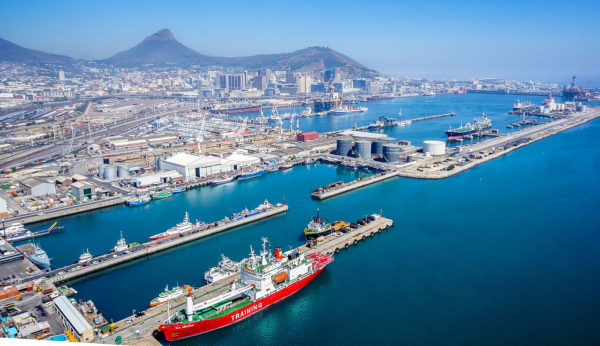
Cape Town water use continues to rise despite the city’s looming water crisis. Photo by Wikimedia Commons.
By Kayla Ritter, Circle of Blue
In 123 days, South Africa’s second largest city could run out of drinking water.
Cape Town, a city of 4 million, continues to grapple with severe water scarcity following three consecutive years of below average rainfall. The city’s six major reservoirs are expected, by late April, to run dry on “Day Zero.”
For months, local authorities encouraged residents to cut water use. The city’s goal is to lower daily water use to 500 million liters, which allocates a mere 87 liters (23 gallons) of water per person per day. A typical desert Southwest resident in the United States consumes five times that much water in a day. Although some Cape Town residents have complied–34 percent use less than 87 liters each day–many households continue to flout the water restrictions. Last week, water use jumped to 641 million liters, up from 628 million liters the week before.
In response, the city is considering jail time for heavy water users.
“A person who fails to comply with water restrictions … is guilty of an offence and is liable to a fine or upon conviction to a period of imprisonment not exceeding six months,” reads a draft of the proposed water by-law, which is open for public comment until January 8. The suggested bylaw would also limit borehole use, punish rogue plumbers, and make swimming pool covers mandatory.
Still, these measures might not be enough. Following the spike in water use, city officials announced that the estimate for Day Zero is being moved forward to April 29, 2018. The date is based on the city’s 500 million liters per day target, plus the addition of 196 million liters per day after February 1, which will come from a variety of water-yielding projects that the government is putting in place.
If water use stays at current levels, however, Day Zero could fall sometime in March.
“Consumption must be reduced drastically so that we move Day Zero further away. We thank the many residents who are saving water, but these consumption levels are alarmingly high at the start of a long dry summer,” said Cape Town Mayor Patricia de Lille in a recent update.
Cape Town’s water woes have been further complicated by political turmoil. The Western Cape is South Africa’s only province run by the Democratic Alliance; the ruling African National Congress controls the rest of the country. As Cape Town’s drought deepened, mismanagement and finger-pointing between the provincial and national governments exacerbated the water shortage.
In recent weeks, tensions among city officials have surfaced, and the Democratic Alliance announced that its federal executive found “governance-related challenges” in its Cape Town caucus. In addition, Mayor Patricia de Lille was suspended from party activities earlier this month over allegations of maladministration. Although direct links to the water crisis were not identified, the breakdown of local government at such a crucial time does not bode well.
Cape Town’s reservoirs are currently more than 67 percent empty. The city will turn off most taps when the reservoirs reach 87 percent empty, a point at which the water intakes have trouble functioning.
Water Crisis Politics
In 2007, South Africa’s national Department of Water and Sanitation warned Cape Town that it would need new water sources by 2015, based on normal rainfall and rising demand. In preparation, the city replaced infrastructure, cut demand, and sought new water sources. Despite these measures, Cape Town was unprepared for a three-year drought, the worst in the city’s recorded history.
As the severity of the drought became apparent, the Western Cape government lobbied for the province and the City of Cape Town to be declared disaster areas, which would ensure funding to address the crisis. The national government was slow to respond, ultimately declaring only five of the Western Cape’s 30 municipalities as drought disaster areas, snubbing Cape Town in the process.
Over-allocation of water for agricultural activities also hampered Cape Town’s ability to respond to the water crisis. In 2015, the national government allocated 60 percent of the Western Cape’s water to Cape Town and most of the remaining 40 percent to agriculture, even as reservoir levels began to falter. Despite appeals by the provincial government, the national Department of Water and Sanitation failed to curb agricultural water use again in 2016.
The national government, on the other hand, has criticized Cape Town’s local government for its lack of adequate preparation. Cameron Dugmore, a member of the Western Cape’s provincial legislature, called on local officials to “accept responsibility for a failure to manage the water crisis facing the City of Cape Town.”
Day Zero
Day Zero seems largely unavoidable at this point. Winter rains in South Africa do not typically arrive until June. The city’s water demand peaks in January. On top of that, all seven of the city’s new water-yielding projects, set to start providing water by February 1, are behind schedule.
If Day Zero comes, water will be cut to the majority of households and businesses. Residents will be forced to gather water from 200 collection sites across the city, which will be supervised by the South African army and local police. The sites were chosen based on population density, water supply pipes, proximity to informal settlements, and the location of critical infrastructure such as hospitals, according to Xanthea Limberg, the mayoral committee member for water.
In an interview with News24, Limberg declined to answer a variety of logistical questions, such as who can gather water from each collection point, and how the city plans to ensure that vulnerable groups are able to access the water. Aside from these issues, questions remain over whether 200 collection points will be sufficient to serve Cape Town’s more than 1.2 million households.
Kayla Ritter is a recent graduate of Michigan State University, where she studied International Relations and Teaching English to Speakers of Other Languages. She is currently based in Manton, Michigan. Kayla enjoys running, writing, and traveling. Contact Kayla Ritter

